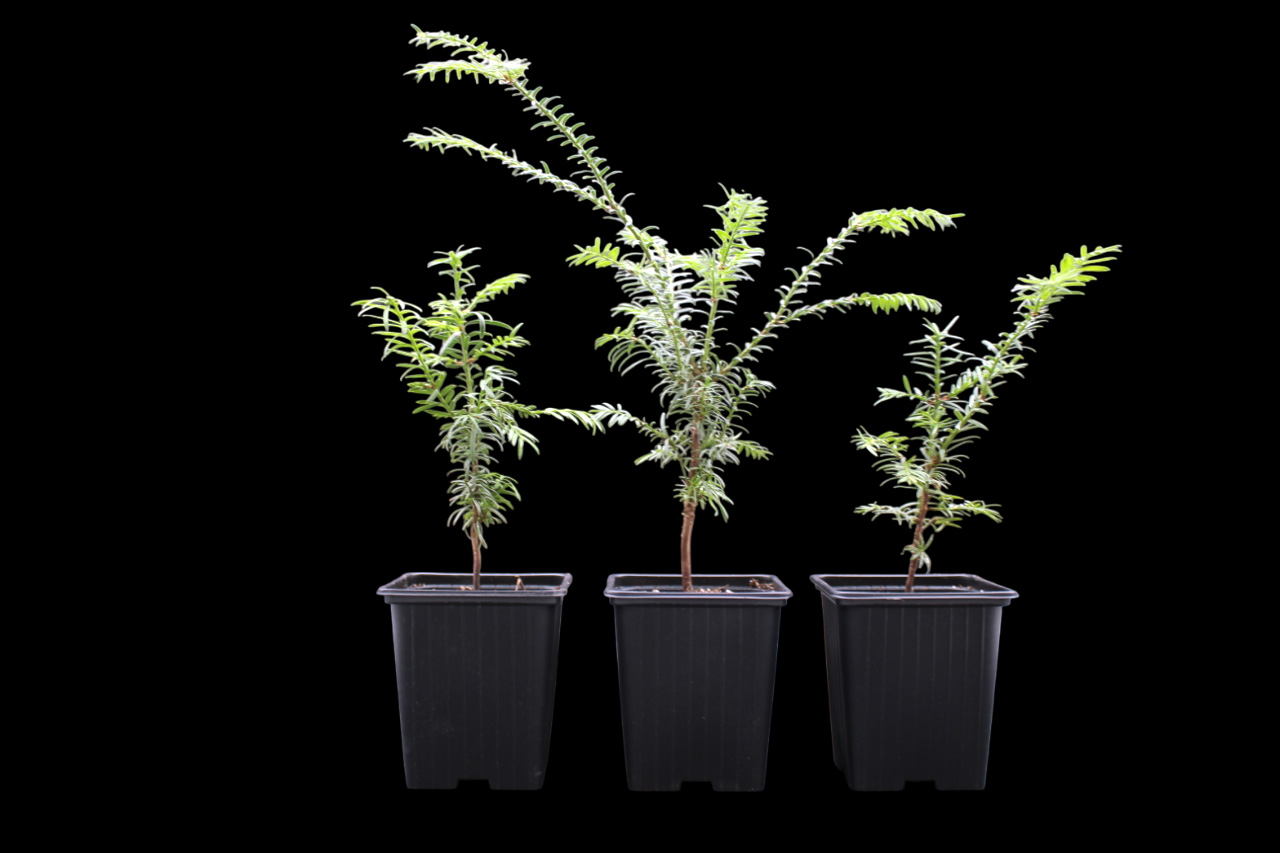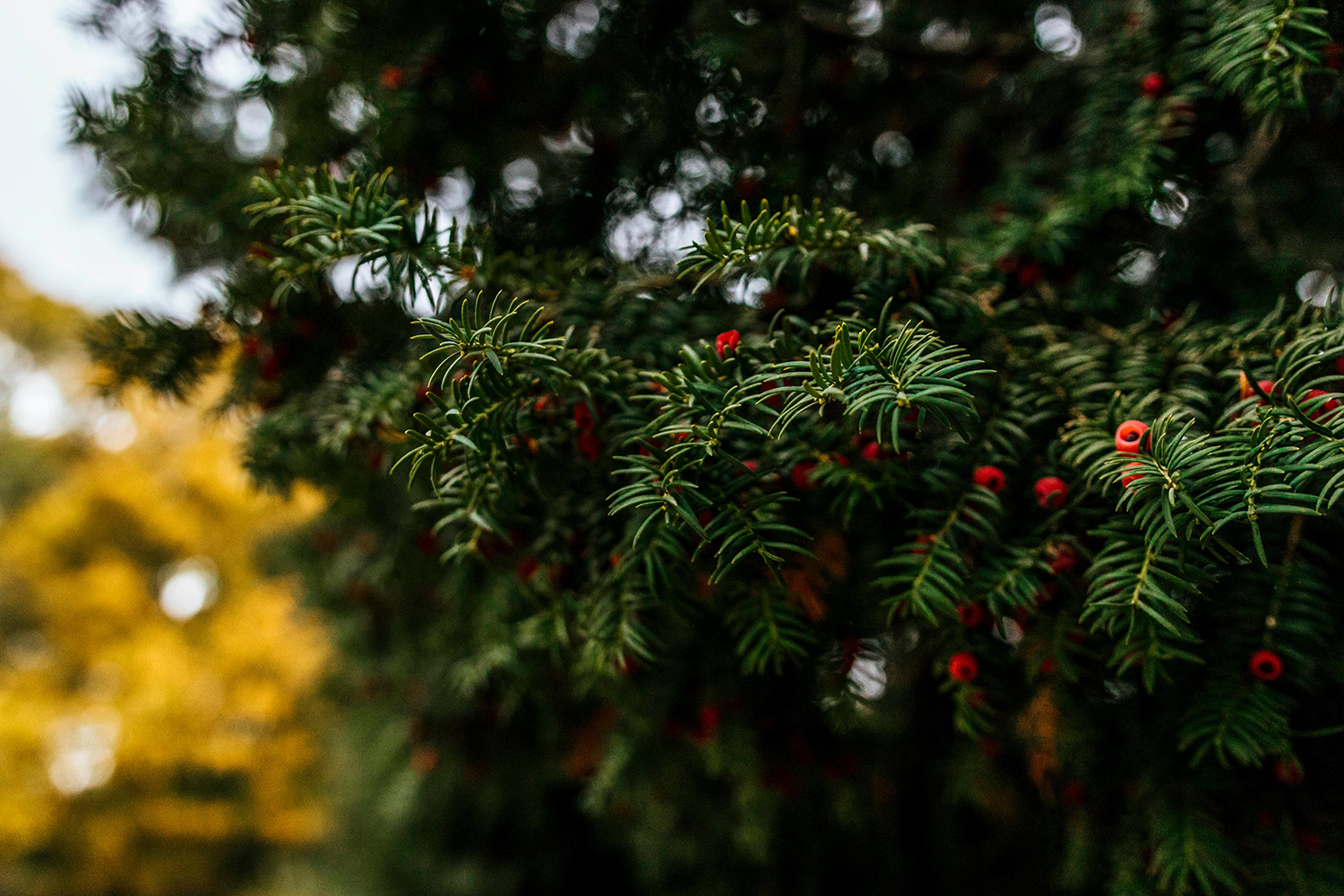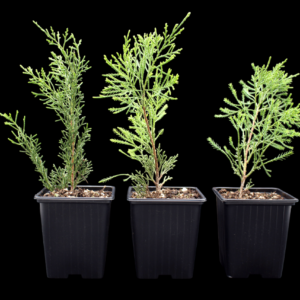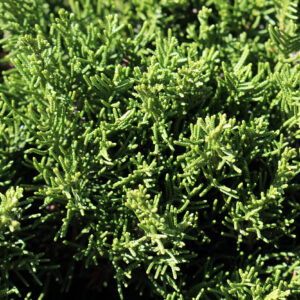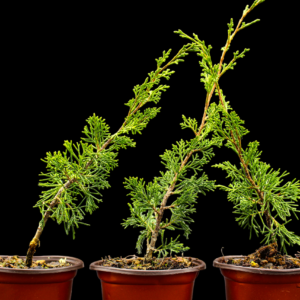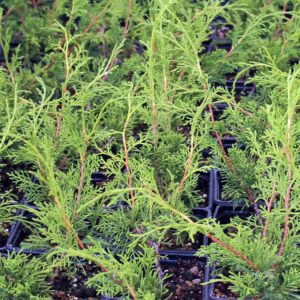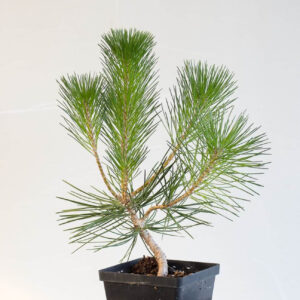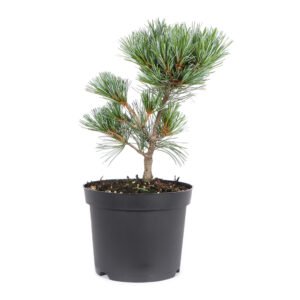Description
Taxus baccata, commonly known as the English yew or European yew, is one of the most revered conifers in horticulture and bonsai art. This evergreen tree, native to Europe, North Africa, and parts of Western Asia, has been associated with mythology, history, and longevity for centuries. Known for its ability to live for thousands of years, it has inspired reverence in churchyards and ancient forests.
In bonsai culture, Taxus baccata is equally respected. Its slow growth, fine needles, and unique bark make it ideal for creating ancient-looking miniature trees. It is a species that rewards patience with character, depth, and dignity — traits that bonsai artists value deeply.
Botanical Overview
-
Scientific name: Taxus baccata
-
Common names: English yew, European yew
-
Family: Taxaceae
-
Type: Evergreen conifer
-
Native range: Europe, North Africa, Western Asia
-
Hardiness zones: USDA Zones 6–9
Unlike many conifers, yews produce red fleshy arils instead of cones. These bright, berry-like structures give seasonal interest, though nearly all other parts of the plant — foliage, bark, and seeds — are highly toxic if ingested.
General Characteristics
Size in nature: In the wild, yews can reach 60–80 feet (18–24 meters) tall, but many ancient specimens are massive, gnarled, and hollow.
Foliage: Needles are short, dark green on top and lighter underneath, arranged spirally around the twig. Their fine texture makes them ideal for scaled-down bonsai canopies.
Bark: The bark is thin, reddish-brown, and peels in irregular flakes, revealing layers beneath. Over time, this produces a rugged, aged look — one of the most appealing features for bonsai.
Growth rate: Yews are slow-growing, sometimes adding only a few inches of growth per year. However, this slow pace is perfect for bonsai refinement, as it allows for controlled development and long-term stability.
Longevity: Yews are famous for their extreme age. Some churchyard specimens in the UK are believed to be over 2,000 years old. This sense of timelessness translates beautifully into bonsai aesthetics.
Why Taxus baccata Works Well for Bonsai
Several qualities make the English yew a highly regarded bonsai species:
-
Back-budding capacity: Unlike many conifers, yews can sprout new shoots even from older wood, making them forgiving of heavy pruning.
-
Fine foliage: The short needles refine well, allowing for detailed branch pads and a natural, miniature scale.
-
Flexible wood: Young branches can be wired and bent easily, while older wood lends itself to carving and jin/shari work.
-
Aged appearance: The combination of flaky bark, twisted trunks, and potential for deadwood makes them look ancient, even as bonsai.
-
Year-round appeal: With evergreen foliage and striking bark, they remain visually interesting in every season.
Styles and Forms in Bonsai
Taxus baccata adapts to many bonsai styles, including:
-
Informal upright (Moyogi): Natural curves reflect how wild yews twist and adapt to their environment.
-
Slanting (Shakan): Suitable for collected material with angled trunks.
-
Cascade (Kengai) and Semi-cascade (Han-kengai): Achievable with flexible young branches.
-
Literati (Bunjingi): Their sparse foliage and elegant trunks suit this minimalist style.
-
Deadwood emphasis: Yews are outstanding for jin (dead branches) and shari (carved trunk) techniques, echoing the weathered look of ancient yews in nature.
Large, collected specimens often lend themselves to dramatic deadwood bonsai, while nursery stock can be trained into refined upright or informal styles.
Cultivation and Care for Bonsai
1. Light
Yews thrive in full sun to partial shade. For bonsai, full sun is preferred to maintain compact foliage and strong back-budding, though protection from intense midday sun in hot climates prevents leaf scorch.
2. Watering
They prefer evenly moist soil but will not tolerate waterlogging. Bonsai should be watered thoroughly when the soil surface begins to dry, ensuring good drainage to prevent root rot. Yews are drought-tolerant once established but appreciate consistent moisture in containers.
3. Soil
A free-draining bonsai mix is essential. A combination of akadama, pumice, and lava rock (or their equivalents) works well. Slightly acidic to neutral conditions are ideal.
4. Fertilization
Feed moderately throughout the growing season. Organic fertilizers, such as cottonseed meal or fish-based products, promote steady, healthy growth. Avoid over-fertilizing, which can cause overly coarse foliage.
5. Repotting
Yews prefer not to be disturbed often. Repot every 4–5 years in early spring, just before buds begin to swell. Reduce roots gradually rather than severely. Old yews often have large, woody roots that should be pruned carefully over successive repots.
6. Pruning
-
Structural pruning: Best done in late winter or early spring. Yews tolerate hard cuts, even back to old wood, thanks to their back-budding.
-
Maintenance pruning: Pinch or cut back new growth during summer to maintain shape and encourage density. Avoid shearing, which can create dense outer foliage and bare inner branches.
7. Wiring
Branches wire easily when young but stiffen with age. Aluminum or copper wire can be used. Because the bark is thin, care must be taken to avoid scarring — use raffia for protection on older branches.
8. Winter care
As hardy trees, yews can withstand cold temperatures. However, bonsai in shallow pots may need winter protection in climates below USDA Zone 6 to prevent root damage.
Pests and Diseases
Yews are generally resilient but may occasionally face:
-
Scale insects
-
Vine weevils (root feeders)
-
Phytophthora root rot in poorly drained soil
Good hygiene, proper airflow, and correct watering practices prevent most problems. Yews also contain toxic compounds (taxine alkaloids), making them naturally resistant to browsing by deer or rabbits.
Propagation
-
Cuttings: Semi-hardwood cuttings taken in late summer root slowly but reliably.
-
Seed: Possible but slow, with germination often delayed by one to two years. For bonsai purposes, cuttings are preferred to ensure cultivar traits and quicker development.
Challenges in Bonsai Cultivation
Working with yews requires patience and respect for their natural rhythm. Key challenges include:
-
Slow growth: Development takes time, but results are lasting.
-
Careful root work: Sensitive to root disturbance, requiring skill during repotting.
-
Foliage density: Without regular thinning, pads can become too dense, blocking light and airflow.
Despite these challenges, the rewards are immense: a bonsai that conveys permanence, strength, and history.
Symbolism and Aesthetic Appeal
Yews have long been symbols of immortality, endurance, and mystery. They are often found in ancient graveyards and sacred sites, representing life, death, and regeneration. As bonsai, they embody these same qualities. Their gnarled trunks, scarred deadwood, and fine evergreen foliage make them appear timeless — miniature echoes of their wild ancestors that have survived for millennia.
Conclusion
Taxus baccata is one of the great classic bonsai species. Though it grows slowly, it rewards patience with unparalleled character. Its ability to back-bud on old wood, tolerate hard pruning, and develop intricate deadwood features sets it apart from many conifers.
Whether styled as a rugged, weather-beaten literati or as a refined upright with layered foliage pads, the English yew communicates dignity and permanence. Cultivating it as bonsai is not just horticulture but also an artistic and philosophical practice — a dialogue with a tree species that has witnessed centuries of human history.
For bonsai enthusiasts, working with Taxus baccata is both a challenge and a privilege. It is a tree that demands time and respect, but in return, it offers the essence of bonsai itself: nature, age, and artistry captured in miniature.
Scientific name: Taxus Baccata
Common Name: English Yew, European Yew
Origin: Spain
Growth height: Up to 20 meters
Plant size: 20 – 30 cm
Age: 3 – 5 years
Delivery form: pot 9 x 9 x 10 cm
Additional information
| Weight | 0,3 kg |
|---|

